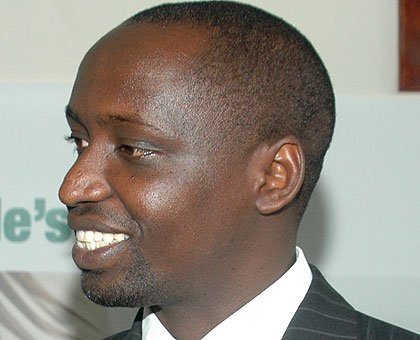By David Himbara
Who Was Théogène?
I dedicated my new book, Kagame Ate Rwanda’s Pension to Théogène Turatsinze. Théogène is among the executives in the pension sector and Rwandans at large who have met tragic ends after fleeing Kagame’s Rwanda.
Théogène was a brilliant, cosmopolitan, charming, and most caring compatriot. I met him when I headed strategy and policy in President Kagame’s office. Théogène was then director general of the Development Bank of Rwanda, an institution in which the Rwanda Social Security Board is the largest shareholder after the government.
Why Théogène Left Rwanda For Mozambique
In 2008–2009, Turatsinze faced two main challenges. First, there was the issue of the German investors who had been introduced to Kagame by Ambassador Eugene Gasana. The German investors then acquired a majority stake in the Development Bank of Rwanda through their African Development Corporation. Once the German investors settled in the bank and began to make changes, the Kagame regime would not let them. The investors decided to withdraw from Rwanda and pulled out of the bank within one year. Turatsinze who wanted to the bank to rise to new heights had sided with the new investors — which made him a target of Kagame cronies, especially the then minister of Finance James Musoni.
The second challenge Théogène faced involved the cronies of Kagame and the ruling elite who kept making demands on the Development Bank of Rwanda to finance questionable projects. One of these projects is no other than the Kigali City Tower, supposedly owned by Hatari Sekoko. Hatari Sekoko, in reality, is a front for Kagame. In my book, I trace Kagame-Sekoko corrupt relationship from the British Virgin Islands company Debden Investments Limited set up in 1998; through Reply Investments Ltd, a company registered in South Africa that purportedly owned a pair of Bombardier Global Express BD-700 jets with a new price tag of US$50 million each; to Kigali City Tower financed by the pension money by the virtue of the pension’s stake in the Development Bank of Rwanda. In all these cases, Hatari was and remains just the frontman for Rwanda’s powers-that-be.
Why And How Théogène Lost His Life
Théogène murdered between October 11 and 15, 2012 in Maputo, Mozambique — this, after he had left Kagame’s Rwanda in 2009. Théogène decided he had had enough of the Development Bank of Rwanda and left to settle in Mozambique. But he knew too much and was always in danger. Here is how the US Department of State described the killing of Théogène Turatsinze:
“On October 15, Mozambique police found former Rwandan Development Board Managing Director Theogene Turatsinze floating dead and tied with ropes in a lake two days after he was reported missing. Mozambique police initially indicated Rwandan government involvement in the killing…Domestic political observers commented that Turatsinze had access to politically sensitive financial information related to certain Rwandan government insiders. The killing remained unsolved at year’s end.”
As shown in my book, the man who replaced Turatsinze at the Development Bank of Rwanda, Jack Kayonga, approved the financing of Kigali City Tower. And Kayonga was soon rewarded. Kagame made him the executive chairman of the ruling party’s business empire, Crystal Ventures.
Farewell Théogène
Dear compatriot Turatsinze — wherever you may be, you were a great son of Rwanda, a man of principles, and my true comrade. We became soulmates in Rwanda where you used to confide in me how high-level corruption in the Kagame regime was making you uncomfortable. You wisely decided to leave Rwanda. When I fled Rwanda we used to visit each other — you in Mozambique, me in South Africa. May you rest in peace Théogène. I humbly dedicate my new book to you.






























































